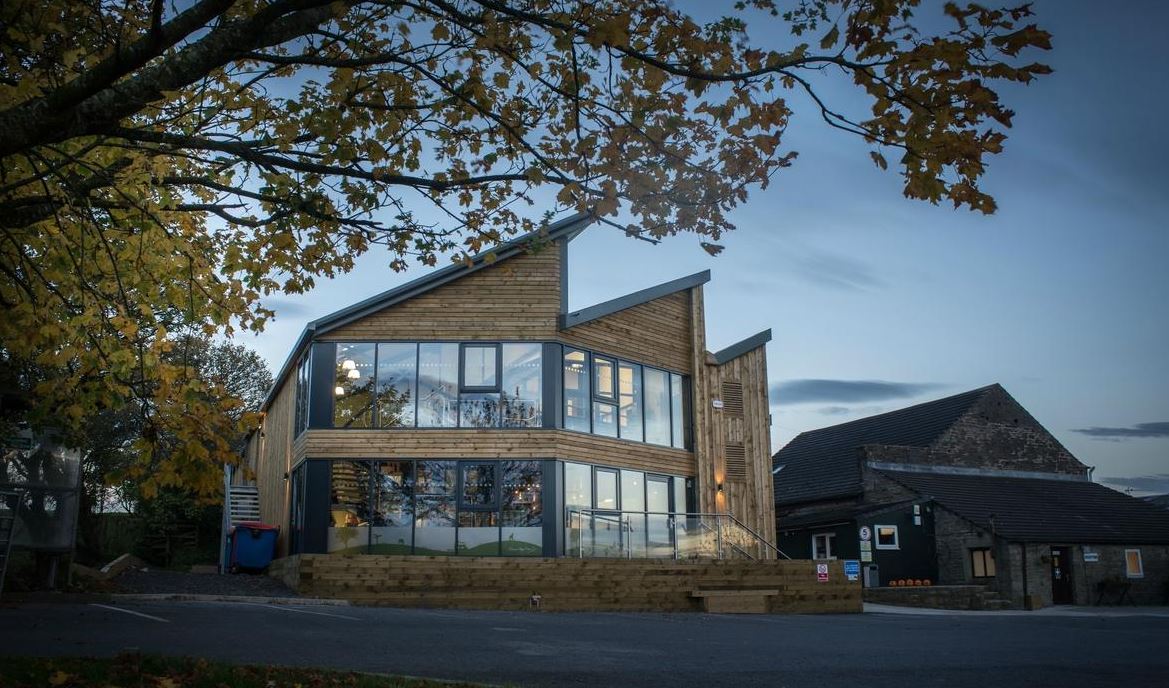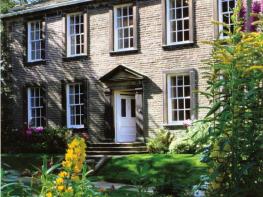Set in a high moorland location, with fabulous views, The Croft is beautiful, stone built,…
Widdop Reservoir and the gritstone crags

Walk around West Yorkshire’s most beautifully located body of water.
2.75 miles (4.4kms)
About the walk
Of all the moorland reservoirs that stud West Yorkshire’s peaty uplands, Widdop is the shining jewel, a glittering pool set in a wide, crag-rimmed hollow surrounded by mile-after-mile of rolling peaty moorland. Poet Laureate Ted Hughes, who was born just a few miles away in Mytholmroyd in 1930, described it as a ‘frightened lake’ in Remains of Elmet, the famous volume of poems about his vanishing South Pennine boyhood.
Widdop was, between 1871 and 1878, the first of the reservoirs to be built on the moors above Heptonstall to supply drinking water for the people of Halifax. With a capacity of 633 million gallons (2,880 million litres) it’s also the largest.
During construction a small, temporary village of wooden huts, with its own bake house and store, was built at Widdop. Locals nicknamed it Navvyopolis and when construction was at its peak around 200 men lived there. Materials for the dam that couldn’t be found on site were brought along a horse-drawn tramway which ran from Shackleton, above the National Trust’s main car park at Hardcastle Crags, along the edge of the Hebden valley to Holme End, Clough Foot and then Widdop. Materials were pulled up the hillside to Shackleton by a stationary engine on an inclined tramway, the huge ramp for which can be seen in the lower reaches of Crimsworth Dean. The tramline can still be traced on foot from Shackleton.
The valve house at the far end of Widdop’s dam wall looks slightly incongruous – an Egyptian building made from Pennine gritstone? John Frederick Bateman, the engineer employed by Halifax Corporation to oversee the reservoir’s construction, had attended the opening of the Suez Canal in 1869. He was so impressed by the architecture he saw there, that he incorporated elements of it in the design of the reservoir’s valve house. Bateman, regarded as ‘the greatest dam-builder of his generation’, was responsible for overseeing the water supplies for Manchester, Glasgow, Dublin and many other cities and his work formed the basis of the water supply network still used today.
The Cludders
The impressive gritstone crags that frame the southern edge of the reservoir are The Cludders, more commonly known as Widdop Rocks. They’re very popular with climbers; renowned climber Don Whillans did the first ascent of a route known as Ceiling Crack here in 1955. Other rocks nearby have equally evocative names: Clattering Stones, Boggart Stones, Slack Stones and Frock Holes.
The boulders scattered beneath Cludders have also attracted celebrity. John Wesley, the Methodist preacher, is said to have delivered a sermon to Widdop’s isolated population from one of them in 1766 – one is inscribed with his initials and the date.
Walk directions
Follow the dirt track from the car park towards the reservoir wall. Cross a metal footbridge over the dam’s spill channel and turn left to cross the embankment.
Bear right at the end of the dam wall, along a track known as Gorple Gate, actually an old packhorse route that climbs from Worsthorne to Heptonstall and now forms part of the Pennine Bridleway National Trail. After passing a small plantation the trail climbs gently away from the reservoir up a small clough and bears right, across the small stream near the top.
At a junction just above you’ll find a marker post; leave the Pennine Bridleway to turn right down a rough path, which is muddy in places, as it follows a crumbled wall.
At the foot of the path, a fingerpost directs you back towards the dam, over a wooden footbridge to a second fingerpost; bear right. By a silt trap pond, where Old Hay Dyke’s waters flow into the dam, the path runs to the right of a wall for a few paces, then carries you right over another footbridge, to turn left, between the water course and the reservoir.
Ignore the first metal footbridge on the left and continue along what is now a track, past the former reservoir keeper's house on your left, to cross the water course on a short vehicle track, which leads, through a metal gate, on to the road. Turn right down the tarmac for a short distance to return to the car park.
Additional information
Good tracks and paths, some potentially boggy moorland
Reservoir set in crag-surrounded moorland bowl
Sheep graze the moors around Widdop so dogs should be on lead between 1 March and 31 July and under control at other times
OS Explorer OL21 South Pennines
Widdop Reservoir car park, Widdop, near Hebden Bridge
None on route
WALKING IN SAFETY
Read our tips to look after yourself and the environment when following this walk.
Find out more
Also in the area
About the area
Discover
Nearby stays
Restaurants and Pubs
Nearby experiences
Recommended things to do
Why choose Rated Trips?
Your trusted guide to rated places across the UK
The best coverage
Discover more than 15,000 professionally rated places to stay, eat and visit from across the UK and Ireland.
Quality assured
Choose a place to stay safe in the knowledge that it has been expertly assessed by trained assessors.
Plan your next trip
Search by location or the type of place you're visiting to find your next ideal holiday experience.
Travel inspiration
Read our articles, city guides and recommended things to do for inspiration. We're here to help you explore the UK.













